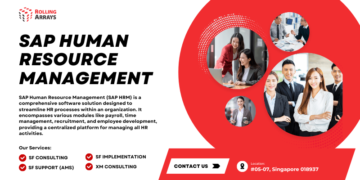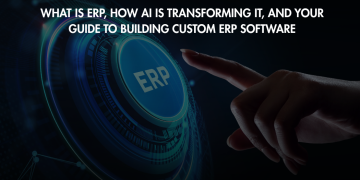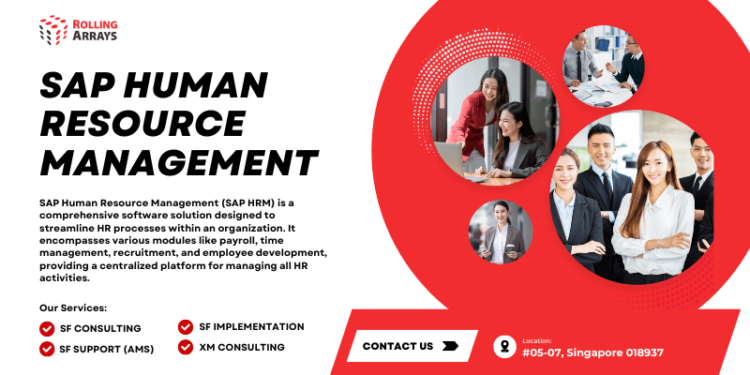In the modern business landscape, enhancing operational efficiency is key to maintaining a competitive edge. One of the most vital areas where efficiency can significantly influence organizational success is human resource management. Managing employees, their data, payroll, recruitment, and performance can be complex, especially for larger companies. Implementing SAP Human Resource Management (HRM) offers a comprehensive solution to effectively manage and optimize your workforce.
Streamlined HR Operations
One of the foremost advantages of adopting SAP Human Resource Management is the streamlining of HR operations. Conventional HR systems often involve multiple software platforms and manual processes, leading to inefficiencies and errors. SAP HRM provides a unified platform that integrates all HR functions, including payroll, time management, employee data management, recruitment, and performance evaluations. This integration minimizes the need for manual data entry, reduces errors, and ensures that all HR processes are cohesive and efficient.
With SAP HRM, organizations can automate routine HR tasks such as payroll processing, leave management, and benefits administration. Automation not only saves time but also reduces the likelihood of human error, ensuring smooth and consistent HR operations. For instance, payroll processing becomes more streamlined and accurate with SAP HRM, ensuring that employees receive their payments correctly and on schedule.
Enhanced Employee Experience
In today’s work environment, enhancing employee experience is crucial. Employees expect seamless interactions with HR, whether it’s applying for leave or accessing their payroll information. SAP HRM offers a self-service portal where employees can manage their HR-related tasks independently. This self-service functionality empowers employees, giving them greater control over their work life and reducing the administrative workload on HR staff.
The self-service portal allows employees to access personal information, view pay stubs, apply for leave, and update contact details without needing to contact HR directly. This not only enhances the employee experience but also allows HR professionals to focus on more strategic tasks. Moreover, SAP HRM’s user-friendly interface ensures that employees can easily navigate the system, improving their overall experience with HR processes.
Improved Data Management and Reporting
Effective data management is essential for making informed business decisions, and managing employee data efficiently is a key aspect of this. SAP Human Resource Management offers robust data management capabilities that ensure accurate and up-to-date employee records. The system provides a centralized database for all employee information, including personal details, job history, performance evaluations, and compensation data.
With this centralized database, HR professionals can easily access and manage employee data, ensuring its accuracy and currency. The system also features advanced reporting and analytics tools, allowing organizations to generate detailed reports on various HR metrics such as employee turnover, absenteeism, and performance. These reports provide valuable insights into workforce trends, helping organizations make informed decisions to improve their HR strategies.
For example, by analyzing data on employee turnover, HR can identify patterns and take proactive steps to address underlying issues, such as enhancing employee engagement or adjusting compensation packages. The ability to generate accurate and timely reports also ensures compliance with labor laws and regulations, reducing the risk of legal issues.
Strategic Workforce Planning
Effective workforce planning is critical for ensuring that organizations have the right people in the right roles at the right time. SAP HRM offers tools for strategic workforce planning, enabling organizations to forecast future workforce needs based on current data and trends. This proactive approach helps organizations address workforce gaps, optimize their talent pool, and ensure business continuity.
SAP HRM’s workforce planning tools allow organizations to analyze their current workforce, identify skill gaps, and plan for future needs. This strategic approach ensures that HR strategies align with overall business goals, leading to better business outcomes. For example, if an organization is planning to enter a new market, SAP HRM can help identify the skills and competencies needed and develop a plan to acquire or develop those skills within the existing workforce.
Compliance and Risk Management
Adhering to labor laws and regulations is a crucial aspect of HR management, and failure to comply can result in costly penalties and legal issues. SAP Human Resource Management offers comprehensive compliance and risk management features that help organizations stay compliant with local, national, and international labor laws. The system automatically updates to reflect changes in labor laws, ensuring that HR processes and policies remain compliant.
Additionally, SAP HRM helps organizations manage HR-related risks. For example, the system can track employee certifications and training requirements, ensuring that employees meet the necessary qualifications for their roles. This reduces the risk of non-compliance with industry regulations and enhances workplace safety. Furthermore, SAP HRM’s audit trail functionality provides a record of all HR transactions, allowing organizations to track and review actions taken by HR professionals and employees, further mitigating the risk of errors and non-compliance.
Enhanced Talent Management
Attracting, developing, and retaining top talent is essential for any organization looking to succeed in a competitive market. SAP HRM offers comprehensive talent management features that cover the entire employee lifecycle, from recruitment to retirement. The system’s recruitment module helps organizations attract top talent by streamlining the hiring process from job posting to candidate selection.
Once employees are onboard, SAP HRM’s performance management tools assist in setting goals, tracking performance, and providing feedback. The system also supports employee development by offering learning management features that allow organizations to create and manage training programs. These features ensure that employees have the skills and knowledge needed to excel in their roles, leading to higher engagement and retention rates.
Moreover, SAP HRM’s succession planning tools help organizations identify and develop future leaders. By analyzing employee performance and potential, the system can identify high-potential employees and create development plans to prepare them for leadership roles. This ensures a strong talent pipeline, reducing the risk of leadership gaps and ensuring business continuity.
Cost Savings and ROI
Implementing SAP Human Resource Management can result in significant cost savings for organizations. By automating HR processes, reducing errors, and improving efficiency, organizations can lower the administrative burden on HR staff and focus on more strategic tasks. This not only saves time but also reduces operational costs, leading to a higher return on investment (ROI).
Furthermore, the ability to make data-driven decisions, improve employee retention, and enhance compliance can lead to long-term cost savings. For example, reducing employee turnover saves on recruitment and training costs. Additionally, improved compliance reduces the risk of costly legal issues, further enhancing the ROI of SAP HRM.
Conclusion
In today’s dynamic business environment, efficient HR management is crucial for staying competitive. Adopting SAP Human Resource Management offers numerous benefits, including streamlined HR operations, improved employee experience, enhanced data management and reporting, strategic workforce planning, compliance and risk management, improved talent management, and cost savings. By leveraging the capabilities of SAP HRM, organizations can optimize their workforce, enhance HR efficiency, and achieve their business objectives.
Digital marketing is the use of the internet and electronic devices to promote products or services. It includes tactics like social media ads, email campaigns, search engine optimization (SEO), and online content to connect businesses with potential customers. It's a fast, targeted, and measurable way to reach people where they spend their time—online.


































































